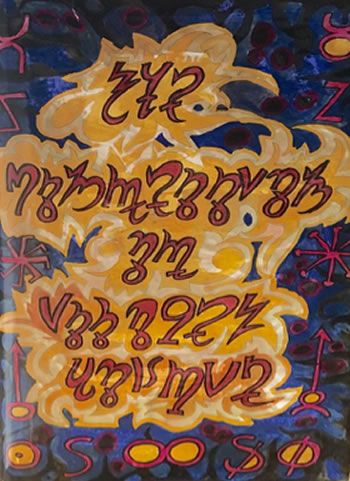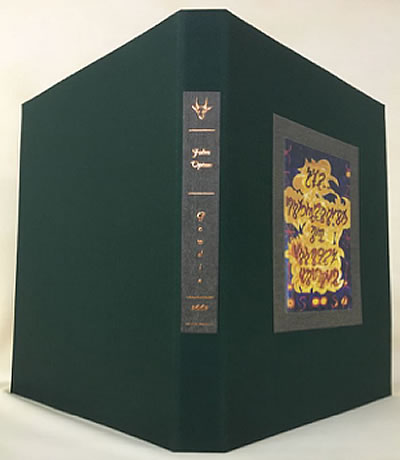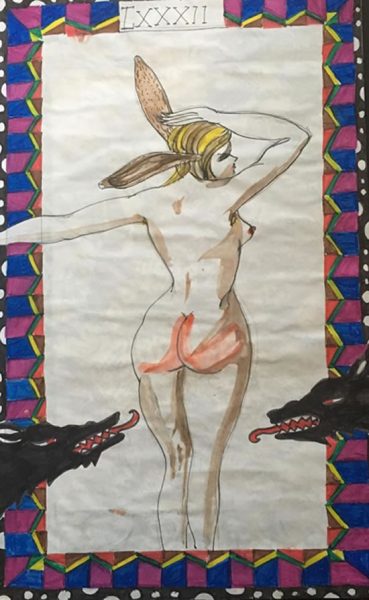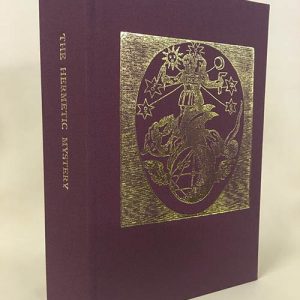The
Confessions of Isobel Gowdie &c.
the ALBION Sketchbooks and the Ayrshire Wica
by
John Upton (1933-2005)
Introduced by Melissa Seims & Dr. John Callow

CLOTH BOUND EDITION
Limited to only 120 copies

Clothbound edition: limited to 120 copies (430mm x 300mm) dark green Edinburgh bookcloth with chestnut brown root fibre endpapers
Click here for the THEBAN copies limited to only 23 copies
About the Book
The Confessions of Isobel Gowdie &c
The painted sketchbooks of John Upton
The book is a full colour over 250 page reproduction in large format (430 mm x 300 mm)
a combination of two extensive art books produced by the initiated witch and pop-mural artist John ‘Albion’ Upton (1933-2005)
John Upton left a full 13 sketchbooks and designs for an initiated Tarot deck which comprise the story, workings, heritage and Book of Shadows of the Ayrshire Wica (‘The Wica’ as it is known).
The two sketchbooks reproduced here tell the stories of the trials and executions of three Scottish witches: Isobel Gowdie, Aleson Piersom and Bessie Dunlop, but from a remarkable connection to both the practise of witchcraft and the folklore of Scotland in the sixteenth and seventeenth centuries up to the present era.
John Uptons artworks are a dazzling and explosive mix of vibrant colour coming from his involvement with the subculture of psychedelia among artists in Brighton in the 1960s.
With collage, numerous physical inclusions on the original pages (including feathers, plants, talismans and photographs), sections of the work opening up as doorways, powerfully erotic and pansexual, John Upton tells the story of witchcraft through the practise of the craft itself fusing faery lore and channelled voices in a vibrant modern story board style.

‘when we would ride we take straws and beanstalks…’
‘Isobel Gowdie continues to cast a glamour about her: she appears in the form of a hare, a crow, or as a jackdaw; she deals death from upon high and gleans scraps from a neighbours table. She goes unnoticed by laird and preacher, above ground, but is treated as an aequal by the king and queen of faeries below. Her marriage bed is only for sleeping; but she thrills to Satan’s illicit black touch and to the ice cold drip of his semen upon her ivory thighs..’
Dr.John Callow

‘And went in the shape of a hare…’
One person who came to be enchanted and inspired by Gowdies evocative tales, was the artist and initiate of The Wica, John Upton, and it is his work which re-imagines Isobel Gowdie, vividly and specifically, within the context of modern, Pagan witchcraft and ritual.
John Uptons life was every bit as interesting, and as varied, as his artistic work. A professional boxer in his youth, a counter-cultural anarchist, mural painter, sculptor and associate of Bill Butler, radical publisher and homosexual poet late of the legendary Unicorn Bookshop which in the 1960’s was a centre for Beat culture literature and banned pornography including early work by J.G.Ballard.

John Uptons mural on the exterior of the Unicorn Bookshop

‘the devil taught us these words…’
Uptons work was the art of an outsider, never a lover of institutional academia, he remained free of the attachments of financial and cultural controls. His work speaks from a place of truth: honest, naïve, explosive!

‘No earthly man could have done this…’
Johns work begs an immediate response from the viewer, it is immersive and in some parts frightening. In this sense the working of practical occult magic, of the folk witchcraft which lies at the heart of the Gowdie sketchbooks, begs a ‘happening’ and a transformation, whether it be figurative, literal or sexual.

‘’The devil would beat us very hard…’
John Uptons early connections with the occult can bee seen in his surviving mural ‘Christs entry into Brighton’ which has Aleister Crowley at its centre flanked by figures such as Jimi Hendrix and Christine Keeler. Perhaps Uptons mural was influenced by the Beatles Sgt Pepper album, but also likely the religious and working-class undertones of Stanley Spencers ‘Christs entry into Jerusalem’.
Uptons work invokes the role of art in the ancient Mystery Religions: having resonances in some places with William Blake, in others with the woodcut illustrations of the 16th and 17th century witchcraft and folk tracts, as well as the vibrant pop art of his own day, he performs the role of alchemist and transformer of consciousness: drawing us back into the realm of historical witchcraft and bringing that primitive undeniably shamanic atmosphere into our experience of the present.
With their emphasis on vibrancy of colour, truth of narrative, channelling of faery power and deep rooted in the witchcraft of our times and times long gone, the Upton sketchbooks evoke a world just on the borders of our own.

‘all the covens knew of it…’

Doreen Valiente
In the early 1970s John Upton met the extraordinary Doreen Valiente and was initiated into witchcraft, in 1979 he moved to Irvine on the West coast of Scotland and some years later met the profoundly influential Charles Clark.
Charles Clark was for several years secretary to Gerald Gardner founder of modern witchcraft, and was initiated by Gardner and his wife Donna intro witchcraft in the 1950’s.
Charles Clark was charged by Gardner with the task of heading the Scottish Wica and went on to found three covens: Perth, Glasgow and Ayrshire. Initiates of Charles Clark’s Scots lineage included Monique Wilson and Raymond Buckland.

Charles Clark’s Wica bracelet
Over a period of ten years, John Upton set about telling the story of Scottish Witchcraft filling thirteen large format sketchbooks with material spanning both historical witchcraft narratives as retold in the voices of the witches themselves, as well as the material covered in Gerald Gardner’s own magical grimoires.
In this work Upton prefigured the major academic efforts of Emma Wilby tracing Scottish witchcraft back to its roots in traditional folk medicine, faery lore and shamanic practices.

‘and he told me to make an ointment of it…’

‘giving him the illness…’
Powerfully influenced by William S. Borroughs, who John Upton had met in Morocco, John Upton experimented with LSD and likely with mushrooms in magical ritual contexts, both entering and then evoking for us the faery-realms and witch-transformations spoken of by Isobel Gowdie and others.

‘We went several times up and down…’

‘when we will be in the shape of crows…’
The creativity of Isobel Gowdie, like that of John Upton, casts a magic that is both inescapably loud, yet with a subtlety that continues working within you long after the initial exposure has passed.

‘the last time our coven met…’

‘and our powers which we had before we were taken…’















